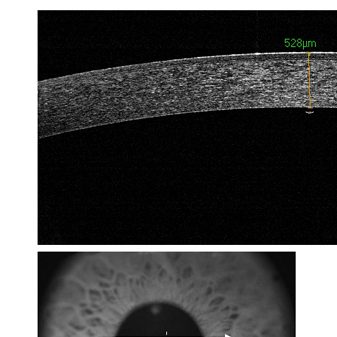CORNEAL PACHYMETRY
Measuring corneal thickness
Corneal pachymetry evaluates the thickness of the cornea.The cornea is a layer of transparent tissue which covers the anterior part of the eye and which acts as the first lens which light encounters when it penetrates the eye. Pachymetry is a fundamental test to bear in mind in the diagnosis of corneal diseases, the follow-up of glaucomatous patients and for carrying out specific refractive surgery treatments.
At the H.O.I. we perform three types of pachymetry studies :
-
Optical interferometry pachymetry, with no contact (Pentacam HR ).
-
Ultrasound pachymetry, using a tube which emits ultrasounds and which when placed on the cornea measures its thickness at that exact point.
-
Optical Coherence Pachymetry OCT, which allows us to measure not only the corneal thickness at a precise point , but also produce maps of corneal thickness, enabling us to study different corneal structures separately, (epithelial and stromal maps ).
To measure intraocular pressure, we have to apply force onto the cornea, thereby flattening it, for which the value is going to depend , among other factors , on the thickness of the cornea. Patients who have a thicker cornea will have measurements of ocular pressure which are artificially high and on the contrary, patients with thin corneas will have ocular pressures higher than what the tonometer measures. Corneal Pachymetry is a simple study , which merely requires the application of an anesthetic drop (if ultrasound is being used), lasting only a few seconds and which does not produce discomfort or blurred vision.

